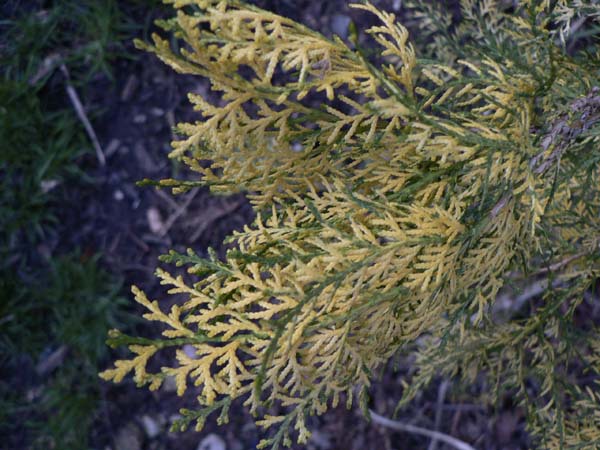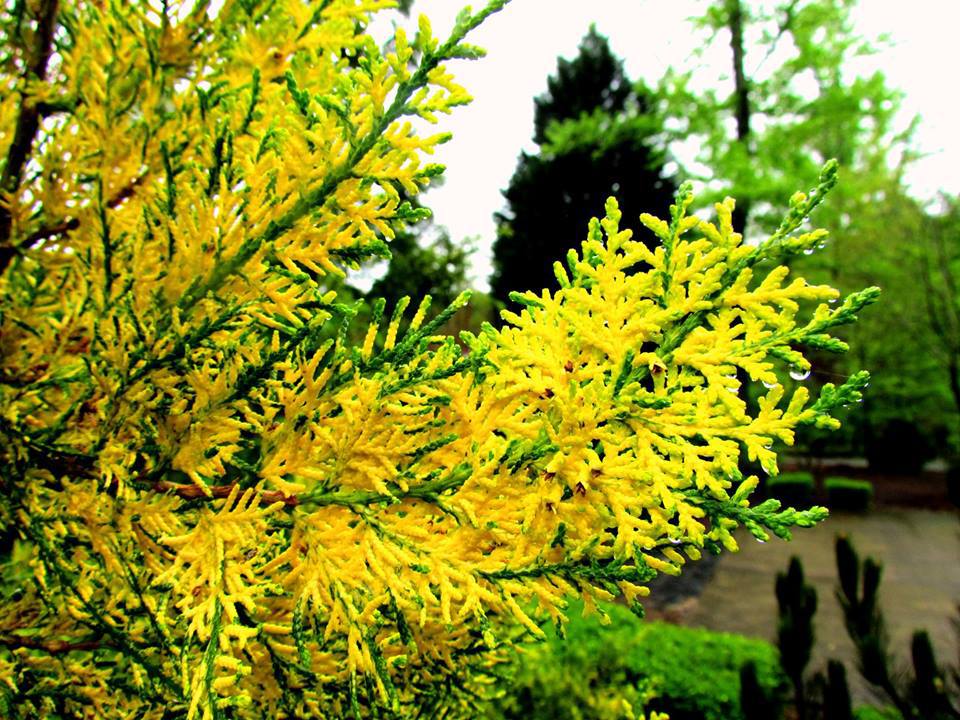Platycladus orientalis 'Van Hoey Smith' is a loose, vertical upright variegated form of Oriental arborvitae that presents the illusion of painted flames on dark green. Typical rate of growth in most areas is 6 to 12 inches(15-30 cm) a year, resulting in a spectacular beacon, 10 feet tall by 3 feet wide (3 x 1 m) after 10 years in the landscape. Although planting in full sun will result in the best color contrast, it should be noted that the foliage will burn badly in parts of the country with low humidity in the summer.
Confusion exists over the history of this cultivar. Some believe that 'Van Hoey Smith' is a renaming of the old cultivar, 'Aureovariegata.' It is said that J.R.P. Van Hoey Smith sent unlabeled cuttings a grower in the U.S. who adapted the name of the sender to the resulting cultivar. This account needs to be verified if possible.


